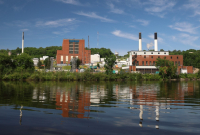Support strong Canadian climate journalism for 2025
The first year of the federal government’s 2 Billion Trees program very nearly achieved its goals, but an access-to-information request reveals Natural Resources Canada is leaning on its current planting partners to stay on track for Year 2 due to delays in bringing new partners on board.
The federal program, launched in 2021, aims to plant two billion trees by 2030, and Ottawa is sharing its cost with provinces, territories, municipalities, businesses and organizations that undertake the planting.
In its first year, the federal program signed agreements to support planting 30 million trees and succeeded in planting 97 per cent of those, according to a recent update.
“These projects will restore nature, enhance biodiversity, create forest ecosystems on fire-damaged land, increase carbon capture and help cool our urban centres,” Keean Nembhard, press secretary for Natural Resources Minister Jonathan Wilkinson, told Canada’s National Observer in an emailed statement.
Nembhard didn’t have a geographical breakdown of where the tree-planting money has gone so far, but last year’s funding totalled roughly $59.5 million, he said.
In December, the program drew criticism for its slow start, and Natural Resources Canada released a roadmap showing how the number of trees planted will ramp up in coming years. By 2026, the program aims to plant between 250 million and 350 million trees annually to reach its goal. More than 200 tree-planting project applications were submitted in the program’s second year, according to the latest update.
However, a Feb. 28 memo to Deputy Minister John Hannaford stated it is “unlikely” those new agreements would be signed in time for the start of the 2022 planting season in spring due to “operational considerations,” such as the high number of applications, the availability of seedlings, the readiness of organizations to start planting and access to land.
The memo, obtained by Canada’s National Observer through an access-to-information request, lays out the department’s strategy to keep the program on track to plant 60 million trees in 2022.
While new applications are being processed, the department plans to support 15 to 20 planting projects with “known and trusted partners” from a previous call for proposals. The government has been “heavily criticized” from the outset of the program, the memo stated: over 65 per cent of MP requests and media coverage focused on delays in projects and the number of trees planted to date.
The memo identified “the perception of procedural unfairness” as the main risk of leveraging partnerships from the 2021 planting season. But those agreements with trusted planting partners will only be for one year, which should alleviate any concerns that new applicants are being sidelined, it added.
This inability to process new applications in time is indicative of the department’s struggle to get the program up and running, said Andrew Almas, an assistant professor in the department of forest resources management at the University of British Columbia.
The government’s yearly planting goals, though underwhelming in the short term, have the potential to reach two billion trees by 2030, but there is still cause for concern, he said.
“The danger of this being so slow is that this program is cast to the side when a new government comes to power,” said Almas. If another government comes in and cancels the program, nurseries will be left on the hook for hundreds of millions of unplanted seedlings, he said.
“It has the potential to crash and burn. And I hope that that doesn't happen.”
Natasha Bulowski / Local Journalism Initiative / Canada’s National Observer







Comments